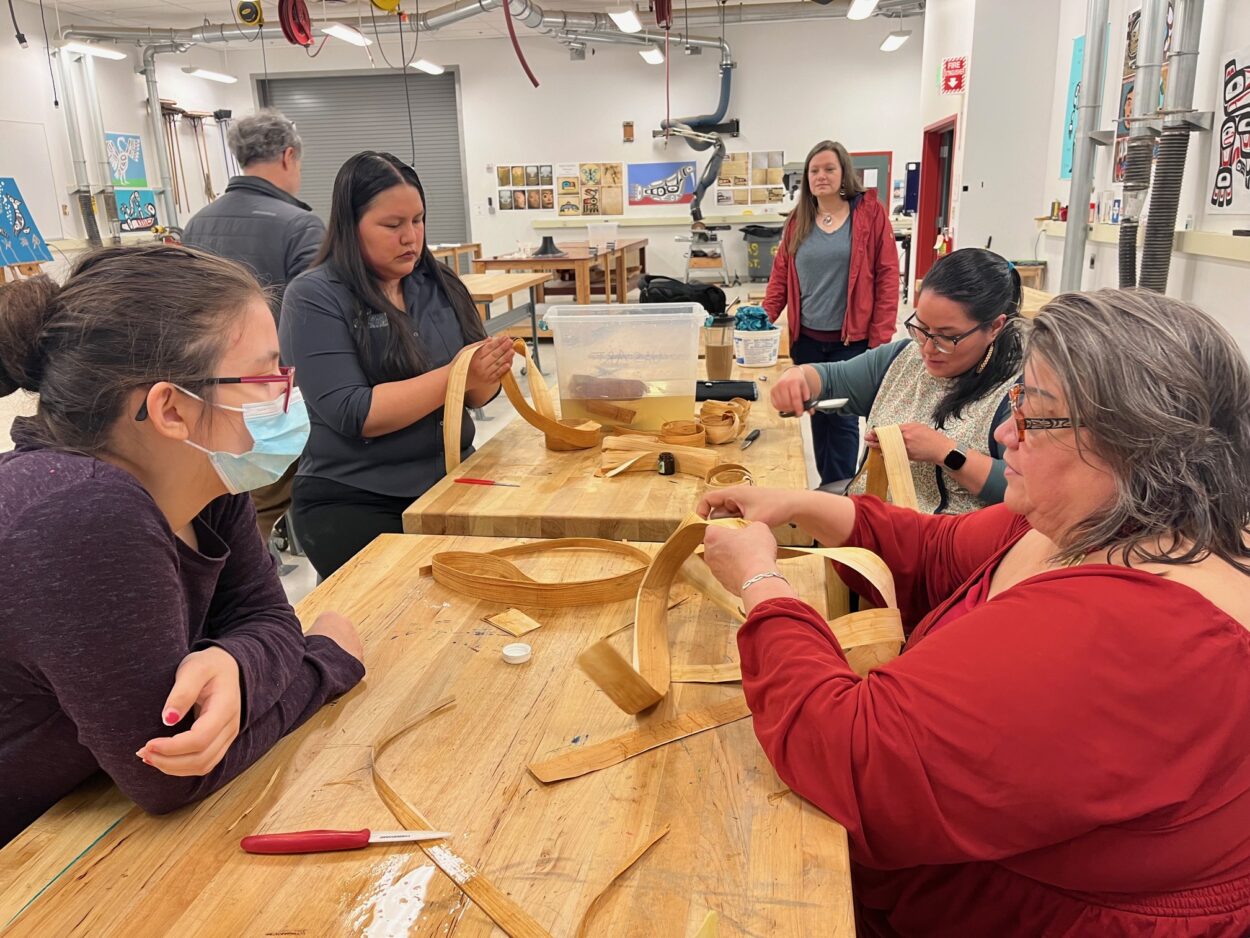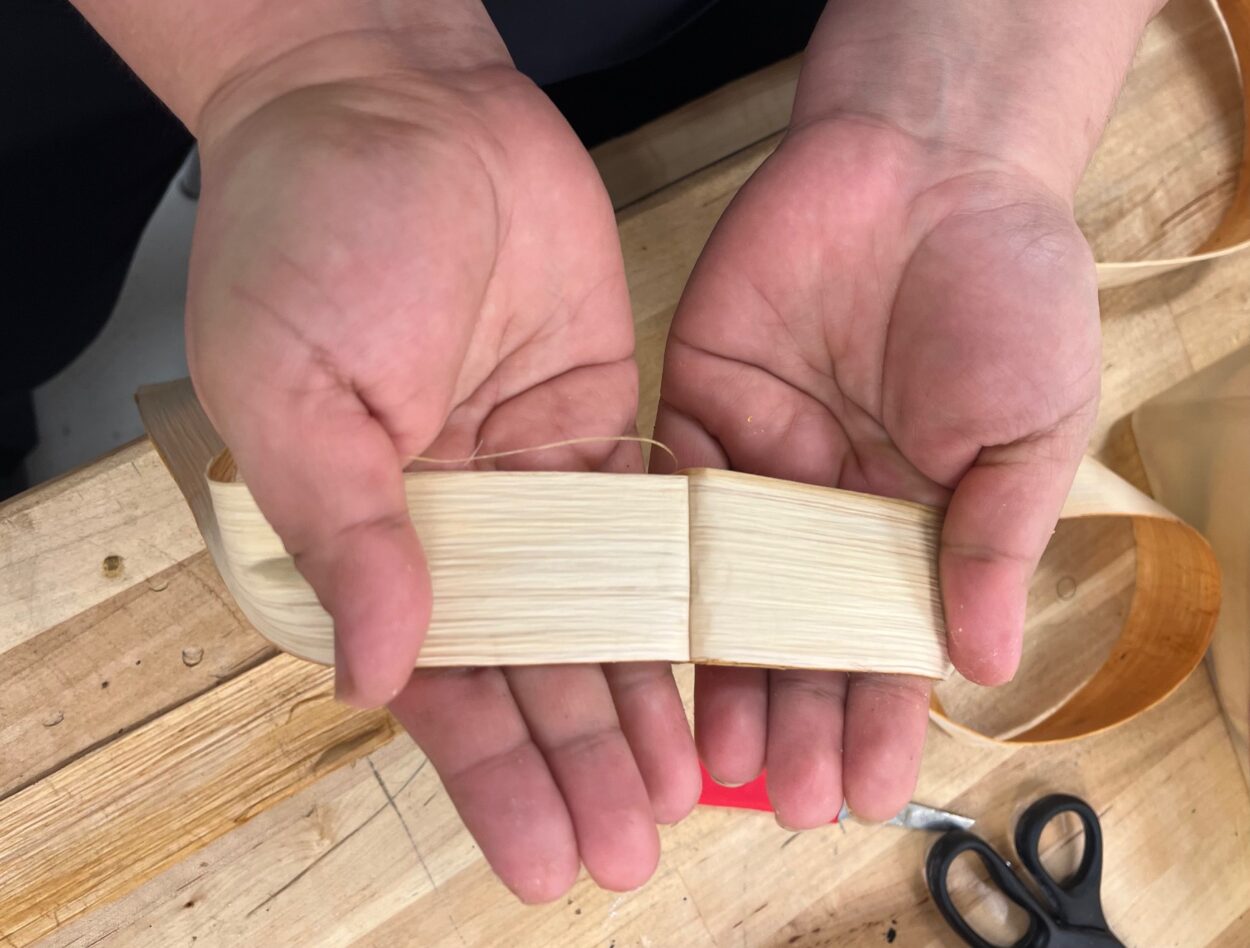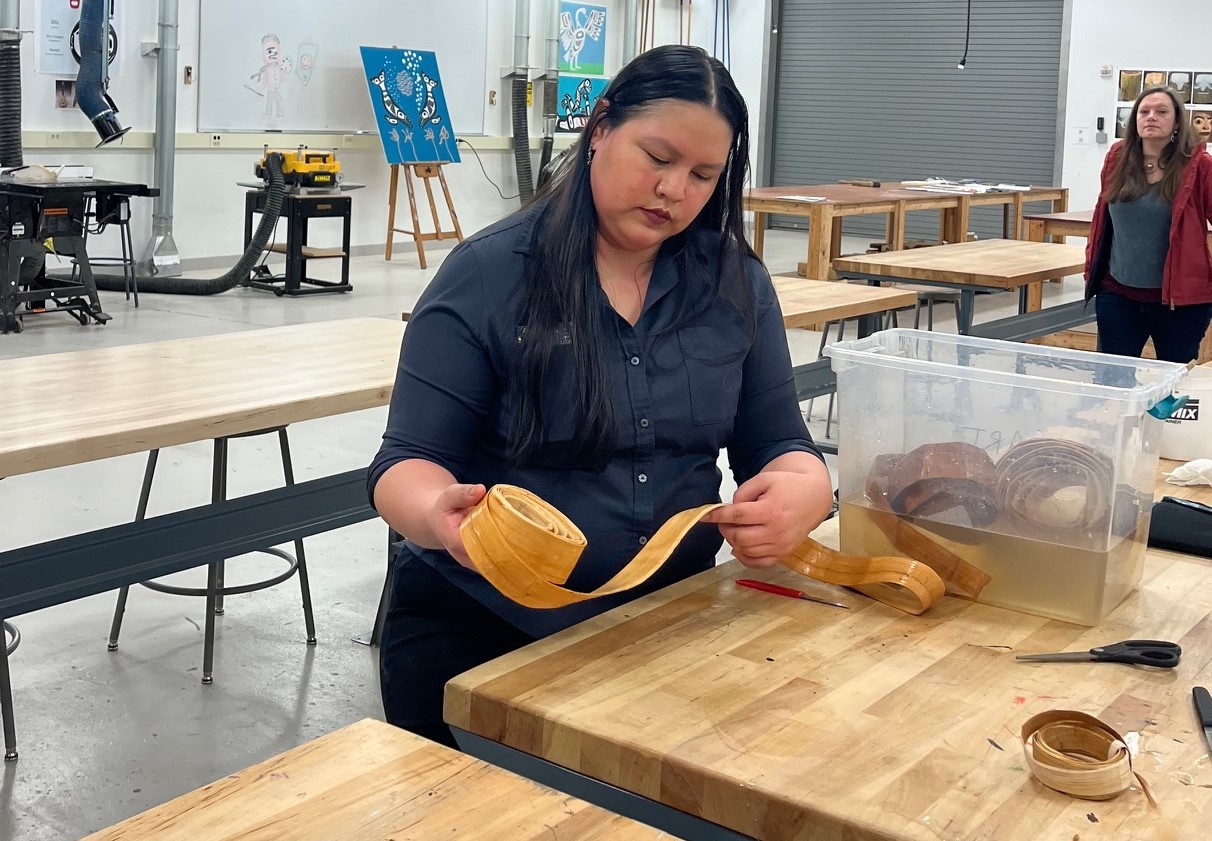
In a back room at the University of Alaska – Southeast in Sitka, four women around a table are splitting yellow cedar bark with small paring knives. It’s painstaking work – and it’s easy to make mistakes. One woman finds a thinning, almost transparent section in her strip of bark, and she turns to the woman next to her, Holly Churchill, for guidance.
Holly Churchill has been weaving for over 40 years. She comes from generations of master weavers. She’s the daughter of renowned Haida weaver Delores Churchill, whose mother was also a master weaver.
“Other teachers do it different ways,” Churchill says. “I’m just describing my way that was taught to me as we were a family of weavers. My grandmother, Selina Peratrovich, was the one that brought us into the forest first — and my mom, Delores Churchill.”
Holly Churchill is talking to her three apprentices – Kelli Hughes, Ashlynn Emanoff, and Jamie Bradley. They’re here as part of a pilot program that launched last month through the University of Alaska – Southeast, in collaboration with the Sitka Tribe of Alaska. Today, they’re splitting coils of wet yellow cedar bark into thin layers, which will then be cut into strips with a machine they call the “Jerry stripper.” Ultimately, the bark will become a tightly-woven basket – and, Churchill says, it will have a specific job.
“Form follows function, you know, so every basket had its own personal purpose,” Churchill says, carefully separating two layers of bark. “A blueberry basket would just be for blueberries, and the salmonberry basket would just be for salmonberries. That’s to keep the contamination out of getting food poisoning, or getting worms or bugs attracted to it.”

Apprentice Kelli Hughes grew up in Kake. She says she wanted to learn from Churchill to hone her own family craft.
“I come from a family of weavers,” Hughes says. “My mother and my sister have been weaving cedar for many years, and I have been weaving on and off over the years. I’m getting back into cedar bark weaving again.”
Over the course of the two-year program, Hughes, Emanoff, and Bradley will attend workshops, learn from visiting weavers, and travel with Churchill to other Southeast communities.

Liz Zacher is the coordinator of the mentor-apprenticeship program, which is supported by a grant from the Evergreen State College, and an art professor at the University of Alaska Southeast. Zacher says she eventually hopes to add apprenticeships like this one to the curriculum for students in the university’s Indigenous Studies program. Zacher says the apprenticeship program started with weaving partly because there aren’t a lot of local teachers.
“We have struggled to find enough people who are available or are prepared to teach weaving in Sitka,” Zacher says. “We often rely on bringing experts from other communities, which is wonderful, but we would like to also train local folks that are interested to be future teachers. We’re starting with weaving because that is kind of a high-demand area here. There’s a lot of interest in the community. Then, you know, we’d hope to branch out into areas like carving and and jewelry and things like that as well.”
Churchill says that without programs like these that intentionally train new teachers, the craft of weaving could be lost in just a few years.
“A lot of our teachers are aging out, you know,” Churchill says as she uncoils a new strip of bark. “My mom is 95. This year, I’m going to be 70. There are other teachers that are, you know, 75, something like that, and although they haven’t made the decision to retire, it’s important that you mentor people to replace you.”
In her lesson today, it’s clear that mentorship for Churchill is about more than just technique – she’s sharing history and stories. As she gently pulls ever-thinner layers from her strip of bark, she tells her apprentices about how to harvest cedar with gratitude to the forest. And with any luck, the three apprentices sitting with Churchill today will someday be sharing their own words of wisdom with new weavers.






























